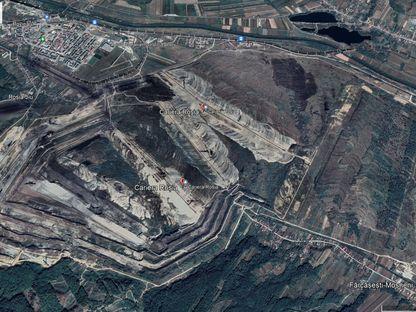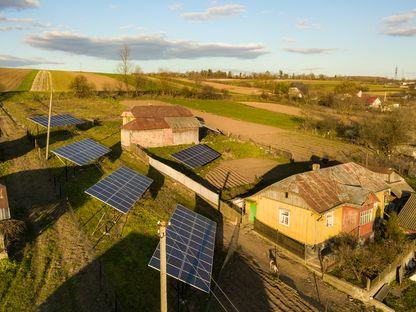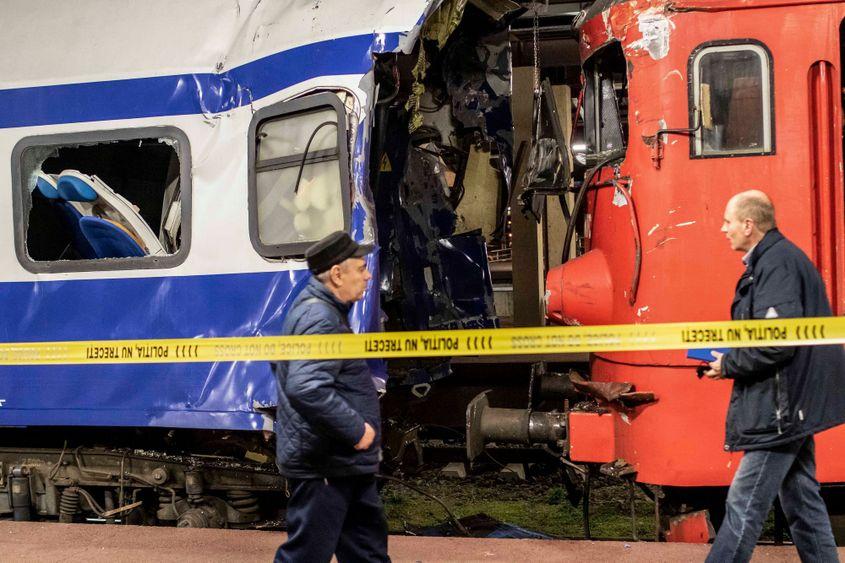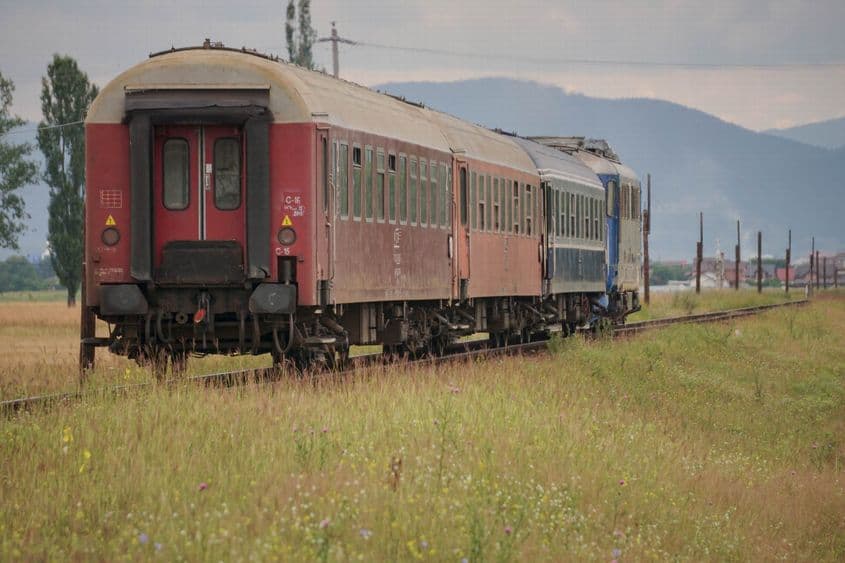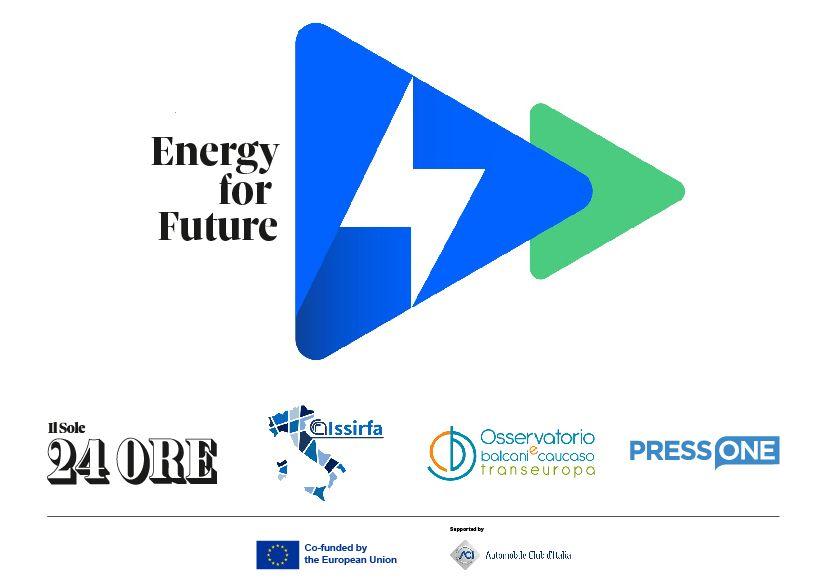The railway system in Romania has fallen far behind that of civilized Europe. In many cases, the running speed is lower than it was during the communist period.
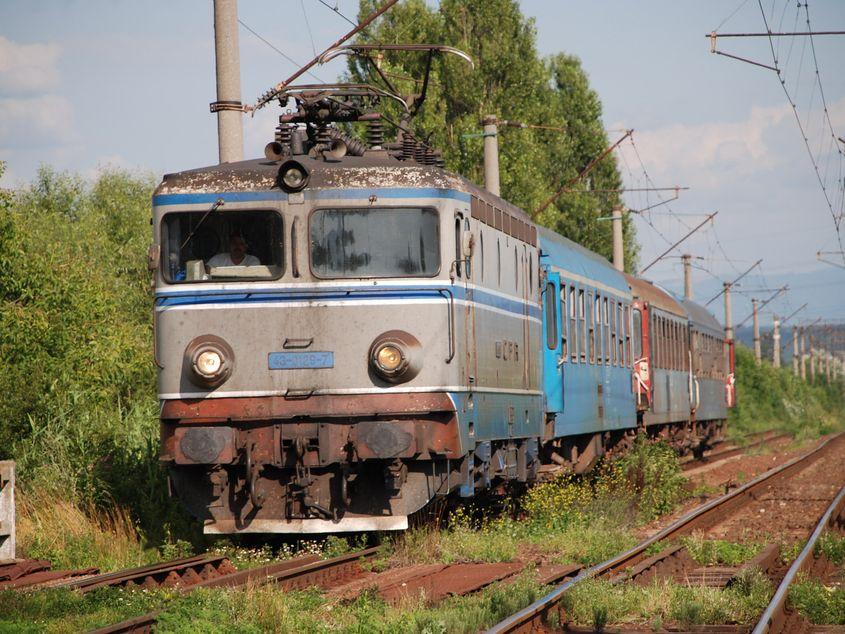
The railway system in Romania has fallen far behind that of civilized Europe. In many cases, the running speed is lower than it was during the communist period.
03/09/2024
On Rusty Tracks. Why Romania's Railway Network Is Approaching Collapse While the EU Offers Billions of Euros for Its Modernization
Romania's rail transportation network is in a dying state. Without major investment and reform, Romania's rail transport is at risk of falling behind.
Romania has around 11,000 km of railways, but most of the network is in a precarious state. While the average speed required by EU passenger transport rules is 160 km/h, Romanian trains barely reach an average speed of 55 km/h. The situation is even worse for freight: the average speed is 16 km/h.
- Since joining the EU, Romania has benefited from cohesion funding dedicated to transport. While in the first financial year, 2007-2013, millions of euros were left unused, in the following period, the level of absorption was 111% for the transport program.
- However, this performance was not felt in the rail sector. Under the Large-Scale Infrastructure Operational Program, on the rolling stock side, only one electric train set arrived in Romania. This in a context in which the initial contract foresaw the purchase of 37 such frames.
- What's more, they would have been the first modern trains purchased by the Romanian state since the famous Blue Arrows almost 20 years ago.
- At the moment, Romania can attract billions of euros for the modernization and reconstruction of the railway network through both the Transport Program and the The National Recovery and Resilience Plan (NRRP), but experts warn that due to delays in the execution of works, bureaucracy and lack of reforms, the railway has a high chance of losing out again.
PressOne spoke to Ionuț Ciurea, executive director of the Pro Infrastructura Association, which specializes in the development of transport infrastructure in Romania. When could the train become a preferred transport option for Romanians? we asked him, among other questions.
PressOne: How does the train travel in Romania, both for passenger and freight transportation?
Ionuț Ciurea, Pro Infrastructura: First of all, we should know that where the passenger train can go, the freight train can also go. Obviously, it should not be a tonnage restriction, because there are almost broken lines that impose certain tonnage restrictions and if a freight train exceeds that limit, it is not allowed to run on that line, because it breaks the bridge. Statistics do not separate the passenger and freight networks either.
But should they be separate?
Mulți ne citesc, puțini ne susțin. Fără ajutorul tău, nu putem continua să scriem astfel de articole. Cu doar 5 euro pe lună ne poți ajuta mai mult decât crezi și poți face diferența chiar acum!
They should not be separate, no. We could talk about separate freight and passenger networks if we had more than 200 km/h top speed on certain lines. If a line for passenger trains is made for 200 km/h top speed, there's not much for freight to do there, because the line is permanently busy, and freight doesn't go at 200. It would simply get in the way.
At network level, all Romania has at the moment is under 160 km/h. Way below. And that's the entire network, that's about 11,000 km. The active rail network, the lines on which you can actually travel, is smaller and has many restrictions.
For example, the average speed of freight trains in Romania is 16 km per hour. That's the speed of a bicycle, and not the speed of a Tour de France bike, but the speed of the bike you ride in the park. In passenger transport it's around 55 km/h and I'm a bit indulgent.
That's well below the European average, right?
Far below the European average, yes. There are portions of these 11,000 kilometers, around a few hundred, where trains can currently reach speeds of 140 km/h. This is mainly on the main railway corridor, which starts in Curtici, passes through the center of the country—Deva, Simeria—then goes up to Teiuș, and later heads towards Sighișoara, Brașov, Bucharest, and Constanța. This is the Rhine-Danube railway corridor, where, with much effort, some sectors have been completed, allowing speeds of up to 160 km/h. Once the signaling and centralization systems are finally ready, who knows how many years from now, more sections will be added.
Coal Mining Expansion Leads to Deforestation: Over 470 Hectares of Forest Cut Down in Gorj, Romania
Over the past six years, more than 470 hectares of national forest land have been allocated by the government, without compensation, to the Oltenia Energy Complex (CEO) for the expansion or opening of new coal mines.
The not-so-green Romania. The state delays settlements for photovoltaic panels by 2 years
PressOne reviews the main dysfunctions in the production, consumption and distribution of energy from renewable sources, as revealed by discussions with consumers and data provided by official sources at the request of our editorial office.
We can expect, in the coming years, that the network capable of 160 km/h will be somewhere in the region of a thousand kilometers out of the almost 11 thousand.
Of the 11,000 km of rail, how many are electrified, and how does that translate into the way the rail network works?
We don't have a clear statistic. It's likely to be somewhere around 20%. Why is that? Because the contact lines, the catenaries, have to be changed. In addition, there are also a lot of diesel trains on the catenary, because there is no rolling stock, there are no electric trains. Even if this line is electrified, both on paper and in reality, there are diesels running on it. You basically have it for nothing.
Un newsletter pentru cititori curioși și inteligenți.
Sunt curios
Even for even the most polluting diesel train, when you average out how many people you pull with it, it is much greener than any small diesel vehicle, than any passenger car. From an environmental point of view, it is much greener and cheaper to transport, even by diesel train, people from point A to point B, than to leave them in cars with internal combustion engines.
In this context, in which even the most polluting diesel train is better than a private car, what should the modernization and reconstruction of the Romanian railways look like, if we are not just talking about electrification?
We need to have a mix of modernization solutions on the infrastructure side, but also on the rolling stock side. We have closed the gaps, but these are civilization funnels: Bucharest, Timisoara, the big cities. Through other nooks and crannies, as you move away from the big cities, from the few poles of development, God have mercy.
Accident between a freight and a passenger train, Galati, March 2023. Photo: Ovidiu Iordachi / Inquam Photos Ovidiu Iordachi / Inquam Photos
What should this modernization look like in terms of railway infrastructure?
First of all, it's not the way things are done now, when X or Y comes to the ministry, we see what so-called priorities we have in the drawer, what projects we have here and there and what we would like as ministers. There is no master plan, no head-to-toe plan of how we want to develop railways in Romania. There is no logical strategy for developing the network or rolling stock.
Shouldn't this logical development, at least in theory, be covered by the General Transport Master Plan?
It is shown when it suits us. If it doesn't suit us, it's no good. Either road or rail. It's simply a matter of form. Romania's General Transportation Master Plan is just for the sake of it. To serve as a basis for some decisions. But, in fact, decisions are taken politically and are not based on figures or strategy.
Can you give me some examples of such decisions?
The example is the Oradea - Arad highway, which is not a priority right now. Others are priorities. This is just an example on roads. On the railways, for example, we have managed to put in some so-called modernization, basically rebuilding locomotives and wagons, but we have not purchased rolling stock.
On the LIOP (The Large Infrastructure Operational Programme), financial year 2014-2020), we boast that we had an absorption rate of 111%. Extraordinary! Except that the railroads lost money, and the example is this much trumpeted contract for 37 electric trainsets, the first modern trains of any kind to be purchased from the Blue Arrows, so almost 20 years. We didn't buy anything for about 20 years. There was money for these 37 oars in the LIOP and we only paid for a couple of oars.
What happened to the rest?
We are doing them on the Transport Program (the successor of the LIOP, for the current financial year 2021-2027). They were phased out. But if we had taken them on the LIOP, wouldn't we now have money for others?
That's what we did on the rolling stock part of the LIOP. The first frame entered the country in December 2023. So instead of having 37 frames paid for, delivered, already in service, on the LIOP we have nothing in service, they're still being tested, maybe they go into commercial service in December.
So a lot of money has been lost on the LIOP, about the rail strategy, which does not exist in Romania. The focus on transport at the moment in Romania, which comes from society and with the maximum indulgence of politicians, is on roads. On rail, God have mercy, politicians do not talk about rail. Rail projects are years behind schedule compared to road projects.
Has this high rate of absorption of structural funds dedicated to transport in the LIOP also been reflected in the kilometers of railway modernized?
On LIOP we have this mega-modernization, so to speak, from the center of the country, from the Coșlariu area to kilometer 614, up to Arad, Curtici, in that area. But there we also have delays of 4-5 years and I think we'll reach 7 years. On one of the four stretches, from Simeria to kilometer 614 near the Arad area, near the border.
The data published by the CFR on the reconstruction work on the main corridor shows an average work rate of 1% per month. That's about 100 months to complete a project. How can one explain this pace, which you say is three times slower than on the road and much less than would be normal for a contract?
CFR has a long way to go from the current dire situation to creating a modern railway network. But we can no longer afford to waste time. Photo: Andreinedelcu88 / Dreamstime.com
First of all it is the state. The impotence and indolence of the state. Both are valid here. If there is impotence on the road, there is less indolence, because there is more pressure from politics and more pressure from society for highways, city bypasses. We are not asking for trains. At the grassroots level, there is no such pressure, and then the politicians, after being incompetent, are just as incompetent.
What does this "indolence" of politicians mean in practice?
It translates into a lack of reform in the CFR and in the whole state apparatus in order to resolve bureaucracy in time. The necessary reforms are not being made.
Through everything that means endorsement, decisions, the rolling part of the contract, where decisions are not made on time. It's being d procrastinated at the speed of day. The bureaucratic part, taking out of the forestry circuit some portions where tunnels are being made, expropriations.
In this context, what expectations can we have for the funds from the Transport Program, the successor of the LIOP, those more than 3 billion euro, which come in parallel with the transport funds from the The National Recovery and Resilience Plan (NRRP)?
There is a good chance that we will once again leave money for road transport, because it has been shown that it is still possible to make a lot of money from the Structural Funds, from the Transport Program. You cannot move them to the NRRP, it works differently. But with the Structural Funds you can make moves so that you don't give the money back.
The NRRP has already lost money on rail. There was a minus adjustment of two billion, because we are doing well, we have GDP growth above what was negotiated in 2021. The adjustment was on the whole program, not just transport. But transportation is somewhere around 25% as funding of the whole The National Recovery and Resilience Plan (NRRP). So the area that suffered the most, proportionally speaking, was transportation.
Romania has been a net beneficiary of cohesion policy since 2007. In the field of transport, how do you see the impact of this policy and the cohesion funds made available to Romania?
If we look back to 2011, all the major transportation projects, railways and then the metro, the metro in Drumul Taberei started on a 100% budget and then it was transferred to European funds, were done on structural funds, on EU money. Even minor, secondary projects were also done on European funds.
If you do the math, you realize that you're putting about half you, half EU, into the total cost. And the conclusion is simple: if you didn't have that half from the EU, you would now have half of everything.
How are things on the rail network since we have been beneficiaries of cohesion policy?
Romania has historically had one of the largest and best developed networks. But that was a long time ago. In the last years of communism and especially after the revolution, the network was left in the dust.
Now we don't necessarily need new lines, we need to repair existing lines. And their maintenance through current repairs or capital repairs, plus modernization and rebuilding of the embankment of the lines, where it's really not possible to repair them. You have to take it out and start from scratch.
Any construction has a life cycle, a life span. Many projects have reached the deadline for capital repair, the capital repair was not done and then we had to take everything out, because it had crumbled. The overwhelming majority of European money went on total reconstruction, which was very difficult.
By 2019-2020 there was also fantastic resistance in CFR to access European funds for repairs in general. They finally realized that they could access money. The rail network needed and still needs a lot of money for maintenance, current repair, capital repair, but without getting that money from the budget. Where would we be now without European money? In the context that only somewhere around 10-15%, every year, on average, has been received from the budget for current repair, capital repair.
In how long do you estimate that rail transportation will become an alternative for Romanians?
At network level, never, at this rate. If we don't put enough money into the network, if we don't have a head, if we don't have a strategy, if we don't invest from the budget and not only on the main corridor, what are we going to do with the secondary corridors?
We should not have to travel by car from Iași to Bucharest, from Cluj to Iași or from Timișoara to Bucharest. It would be logical, from the point of view of economic efficiency, the environment and even personal comfort, for the masses of people on these routes to travel by train. If you can sit quietly on the train, you have a decent toilet, you can sleep, you can eat on the train, you can work on the train, why should you drive to Iasi? Even if you have the highway. Okay, you don't, you will, but why drive? To get tired?
You get off work, you get on the train, you can take a shower on the train, you can sleep, you can eat and the next morning you're in Iasi. You do your business there and come back. That would be nice. But to do that you have to invest billions in infrastructure and rolling stock, to get people out of their cars and onto trains.
You need many billions of euros for infrastructure, a bit of speed, a bit of comfort and rolling stock. If money is never going to be allocated, then, if we are talking on a mass level, the train will never be more attractive than the car.
___
This article is published in the framework of the "Energy4Future" project co-funded by the European Union. The European Union is not responsible for the information and opinions expressed in the course of this project and article. The sole responsibility for the content lies with PressOne.

Avem nevoie de ajutorul tău!
Mulți ne citesc, puțini ne susțin. Asta e realitatea. Dar jurnalismul independent și de serviciu public nu se face cu aer, nici cu încurajări, și mai ales nici cu bani de la partide, politicieni sau industriile care creează dependență. Se face, în primul rând, cu bani de la cititori, adică de cei care sunt informați corect, cu mari eforturi, de puținii jurnaliști corecți care au mai rămas în România.
De aceea, este vital pentru noi să fim susținuți de cititorii noștri.
Dacă ne susții cu o sumă mică pe lună sau prin redirecționarea a 3.5% din impozitul tău pe venit, noi vom putea să-ți oferim în continuare jurnalism independent, onest, care merge în profunzime, să ne continuăm lupta contra corupției, plagiatelor, dezinformării, poluării, să facem reportaje imersive despre România reală și să scriem despre oamenii care o transformă în bine. Să dăm zgomotul la o parte și să-ți arătăm ce merită cu adevărat știut din ce se întâmplă în jur.
Ne poți ajuta chiar acum. Orice sumă contează, dar faptul că devii și rămâi abonat PressOne face toată diferența. Poți folosi direct caseta de mai jos sau accesa pagina Susține pentru alte modalități în care ne poți sprijini.
Vrei să ne ajuți? Orice sumă contează.
Share this


